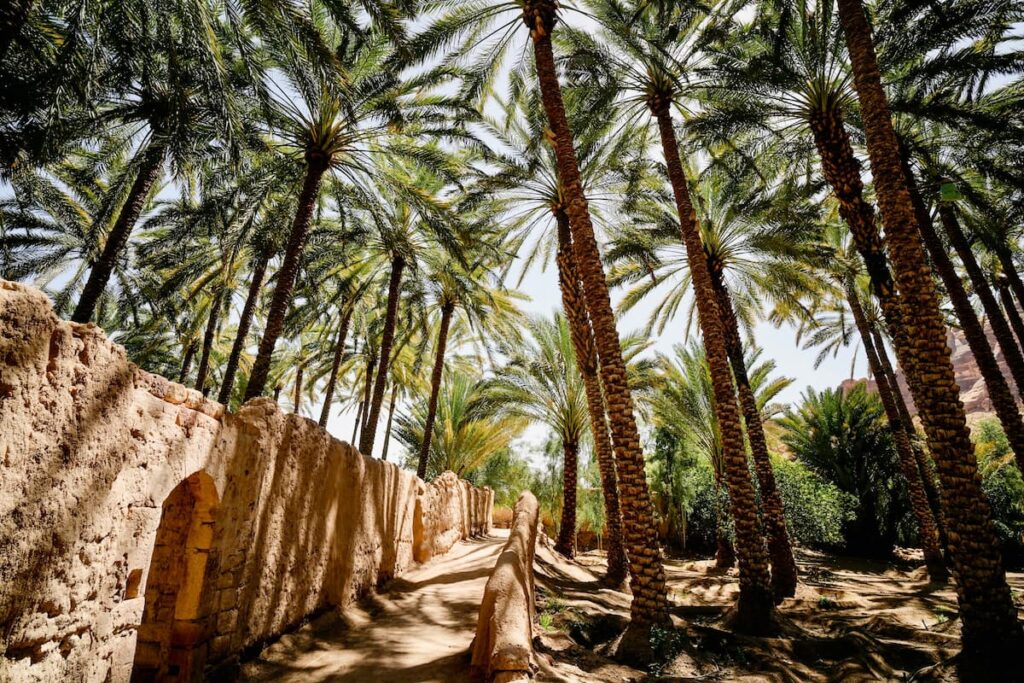A Quiet Gem With Deep Cultural Roots
Nestled in southwestern Morocco, the town of Taroudant is often dubbed “Little Marrakech,” yet it offers a more peaceful, authentic alternative to the bustling tourist hub. Just 90 minutes east of Agadir, Taroudant greets visitors with honey-colored sandstone walls, winding medina alleys, and a pace of life shaped more by tradition than tourism.
In the early morning, the town awakens to the call of the muezzin. Streets fill with locals on bicycles, on foot, or riding horse-drawn calèches. Vendors arrange vibrant piles of spices and produce, and the scent of fresh khobz floats through the air. The medina, a designated Moroccan national cultural heritage monument, pulses with life yet remains largely untouched by mass tourism. Behind the high walls lies a world of Amazigh (Berber) hospitality, from traditional tea shops and hammams to family-run riads like La Maison Taroudant.
Unlike Marrakech, where foreign visitors have overtaken the city center, Taroudant remains a living Moroccan town. It’s a base for trekking in the Anti-Atlas Mountains, excursions into the Sahara, or surf trips along the Atlantic coast. Its serene charm lies in its balance — modern comfort and ancient tradition coexist harmoniously.
Morocco’s Rising Star in Global Tourism
Morocco welcomed 17.4 million visitors in 2024, surpassing Egypt to become the most visited country in Africa. This figure marked a 20% rise from 2023 and a 33% increase over pre-pandemic levels. With the upcoming African Cup of Nations, new luxury hotels in Rabat and Tangier, and expanded flight routes like Los Angeles-Casablanca and Newark-Marrakech, the tourism surge is expected to continue through 2025.
But with growth has come growing pains. A 2024 McKinsey & Company report ranked Marrakech among the world’s most overcrowded tourist cities, exceeding even Rome and Paris in visitor density. Experts have raised alarms over overtourism’s risks: cultural erosion, rising costs for residents, and environmental strain. In this context, Taroudant stands out as a promising example of more sustainable tourism.
With a population of 80,000 and a median age of 28, Taroudant retains a youthful vitality while preserving its heritage. It continues to serve as a regional trading hub, echoing its commercial significance during the reign of the Saadian dynasty in the 16th and 17th centuries.
Local Experiences, Global Appeal
Visitors to Taroudant are drawn not by spectacle but by soul. The town’s two souks — the Souk Berbère and the Souk Arab — offer fresh produce, local spices, silver Amazigh jewelry, ceramics, and leather goods. Riads tucked behind plain exteriors reveal lush Mediterranean-style gardens, citrus trees, and cozy courtyards. French designer Margaux Pigalle, who moved to Taroudant in 2019, co-owns La Maison Taroudant and describes it as a “Berber house that resembles a mas from the south of France.”
Just five miles away, the Palais Musée Claudio Bravo offers another surprise. The former home of Chilean hyperrealist painter Claudio Bravo now operates as a museum and hotel. It houses antique collections from around the world and artworks by Francis Bacon, all framed by 75 hectares of gardens.
Further southeast lies Tioute, a palm-filled oasis with ancient khettara irrigation systems still in use. The Taitmatine Women’s Agricultural Cooperative there allows visitors to meet Amazigh women producing argan oil — a tradition increasingly valuable in both the culinary and cosmetic worlds.
A Model for Conscious Travel
South of Taroudant, the Anti-Atlas Mountains present a different Morocco — pink mud-brick villages, narrow hiking paths, and unique rock formations like Napoleon’s Hat near Tafraoute. The region remains a stronghold of Berber culture, with trekking, rock climbing, and cultural exchange as its primary draws. To the west, the Atlantic shoreline is equally compelling, with destinations like Agadir, Taghazout, and Tamraght attracting surfers and digital nomads.
As global tourism reshapes iconic destinations, Taroudant offers a viable path forward: a culturally rich, environmentally balanced alternative that supports local communities. With Marrakech projected to see an 86% rise in tourism by 2030, diversifying travel experiences may not only protect overburdened cities but also enrich travelers’ understanding of a country that has much more to offer beyond its most famous stops.


